With almost as many UNESCO World Heritage Sites as leader-of-the-pack Italy per square mile, Croatia’s packed with places of historical, cultural and natural significance. Visiting several of these places on your custom Croatia tour is a must. Without further ado, here’s all Croatia’s UNESCO Sites, listed in chronological order of their inscription.
Jump to a section of this article

Old City of Dubrovnik
Often called the Pearl Of the Adriatic, the city of Dubrovnik was first inhabited in the 7th century, at the time it was named Ragusa. It wasn’t until the 12th century that the Republic of Ragusa rose to prominence as a maritime power, rivalling Venice. The old city’s distinctive defensive walls date from the 13th to 15th century. Walking the walls is one of the must-dos when visiting Dubrovnik for the first time. Much of what you see in the city is the result of rebuilding after a devastating earthquake in 1667. The original date of UNESCO inscription was in 1979, with an extension in 1994. UNESCO was instrumental in the reconstruction of the city after bombardment in the Croatian War of Independence.
How to visit Dubrovnik: Dubrovnik is half an hour from Cavtat and just about in day trip reach from Korcula or Kotor but to experience the city at it’s best (and avoid walking the walls at the hottest part of the day) we think you should stay overnight. As Dubrovnik is our oldest destination we have a rich selection of accommodation in and close to the old city.

Historical Complex of Split with the Palace of Diocletian
Just a few hours up the Dalmatian coast from Dubrovnik you’ll find Split. Added to the UNESCO list in 1979, this ancient Roman settlement was the site of a Palace built for as a retirement home for the emperor Diocletian. Not all Roman emperors were assassinated, Diocletian was the first Roman emperor to abdicate voluntarily. His palace walls form the core of Split’s old city.
How to visit Split: You could spend a night or two in Split, it’s a good base for day trips by boat to the Dalmatian islands of Hvar, Brac and Vis, or inland to Krka and Plitvice National Parks. You could also stay close by in Trogir (see below). If you’re pushed for time and are prioritising the islands, you’ll likely pass through Split to catch a ferry. We often arrange city walking tours for our guests who are passing through and have a few hours to see the city.
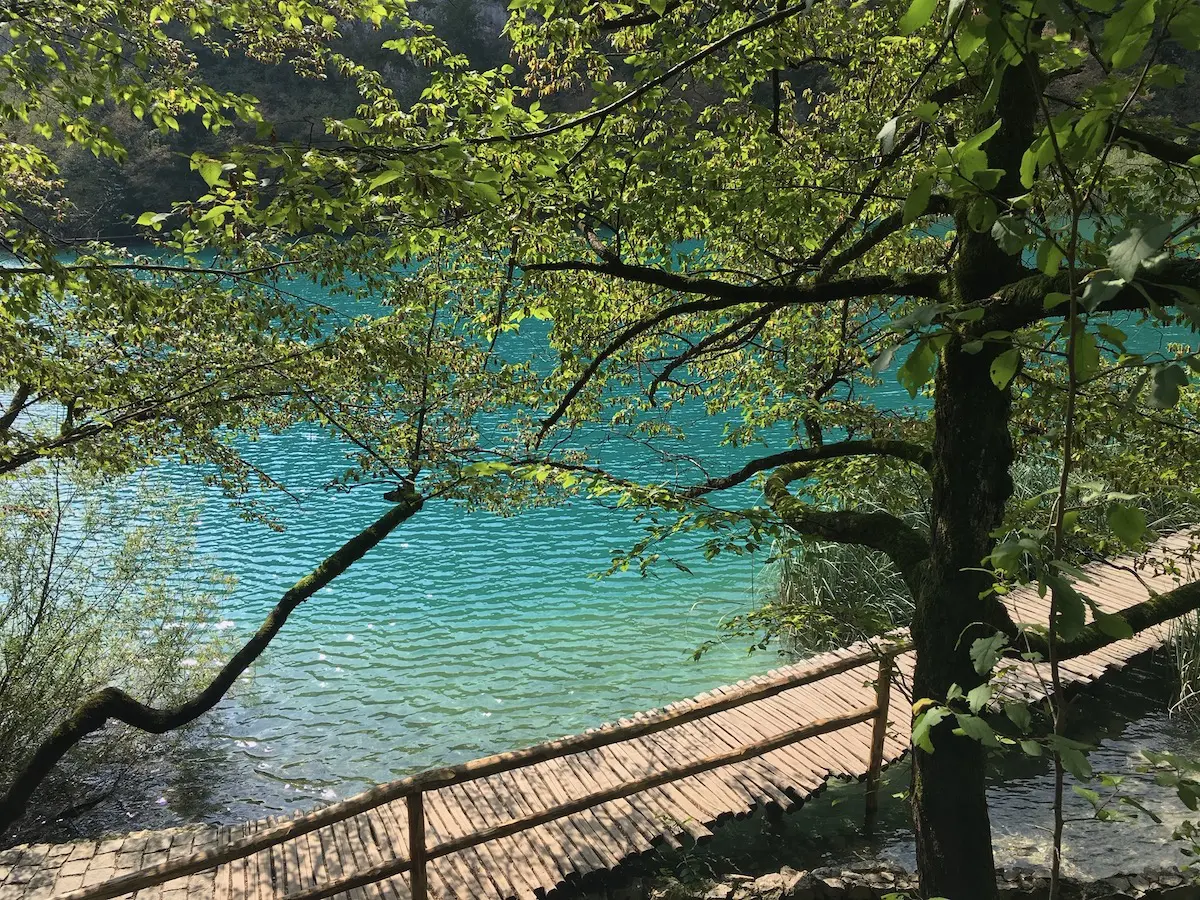
Plitvice Lakes National Park
The last of the class of 1979, Plitvice is Croatia’s oldest National Park. An area of truly outstanding natural beauty, the lakes, waterfalls and forest that make up the park are a dreamland for nature lovers.
How to visit Plitvice: Plitvice is between a two and three hour drive from any of Split, Trogir, Zadar or Zagreb, all overnight destinations we offer. As Croatia’s number one inland attraction however we have to warn you that it can get busy from late morning to mid afternoon. For this reason we highly recommend carving out time in your schedule to stay overnight in the Plitvice area and get to the park before the day-trippers.
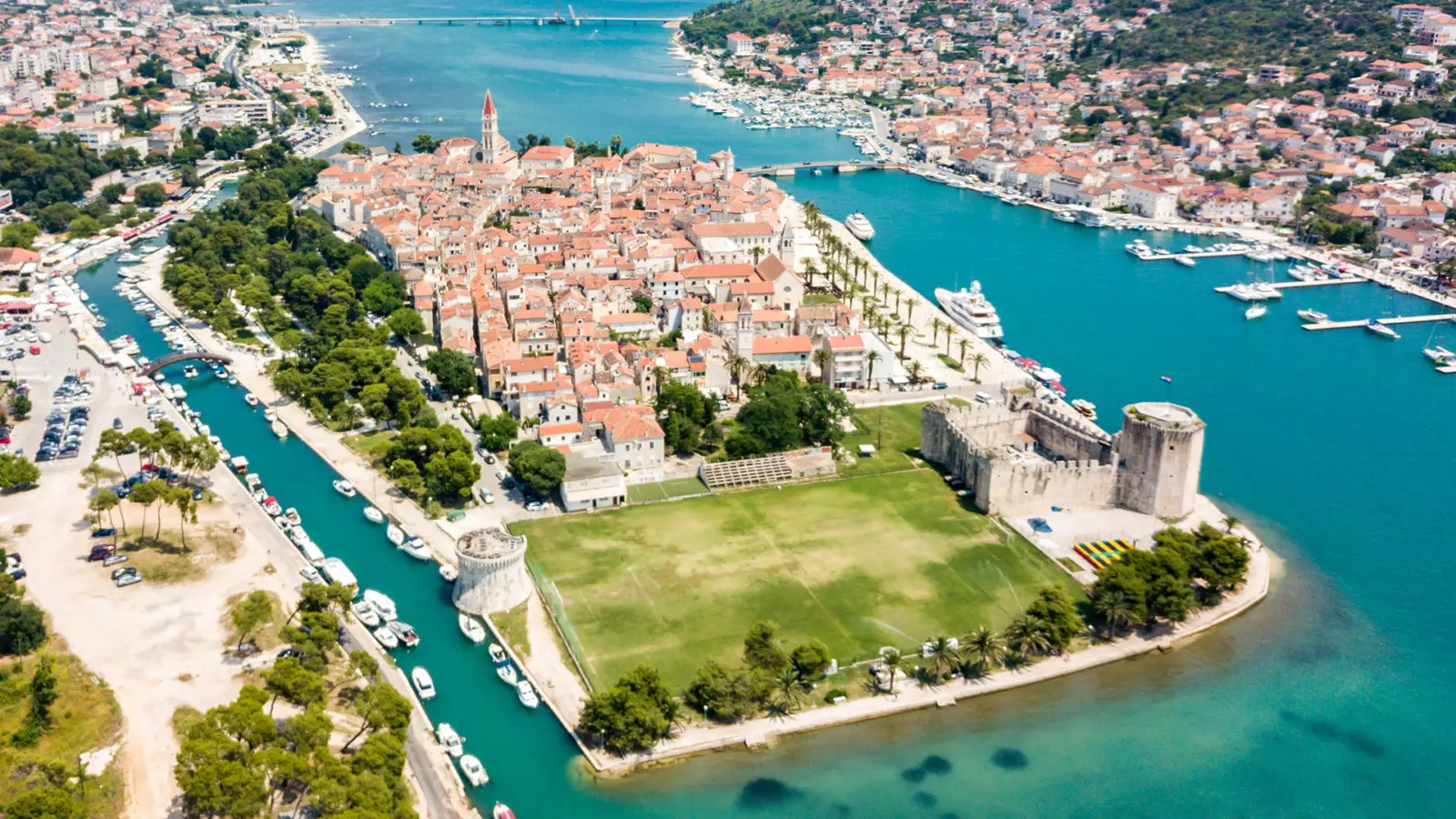
Historic City of Trogir
If Dubrovnik and Split weren’t enough for you, then Trogir, 30 minutes up the coast from Split and much closer to Split’s International Airport than Split itself, is a well preserved medieval walled town on a peninsula that was built on on the site of an ancient Greek and Roman city. The exceptional preservation of the town is why it was added to UNESCO’s list in 1997. Apart from being a lovely place to spend time soaking up the small town atmosphere, adjacent Ciovo island, connected by a road bridge, has some fabulous beaches. Like Split, Trogir is a good base for trips on the Croatian mainland or the nearby islands.
How to visit Trogir: We often recommend Trogir as a lower-key alternative to stay in over lively Split. You can read more about choosing between staying in Split or Trogir. You can day trip to Trogir from Split easily – there’s a regular ferry running between Trogir directly from the Riva, Split’s waterfront promenade.
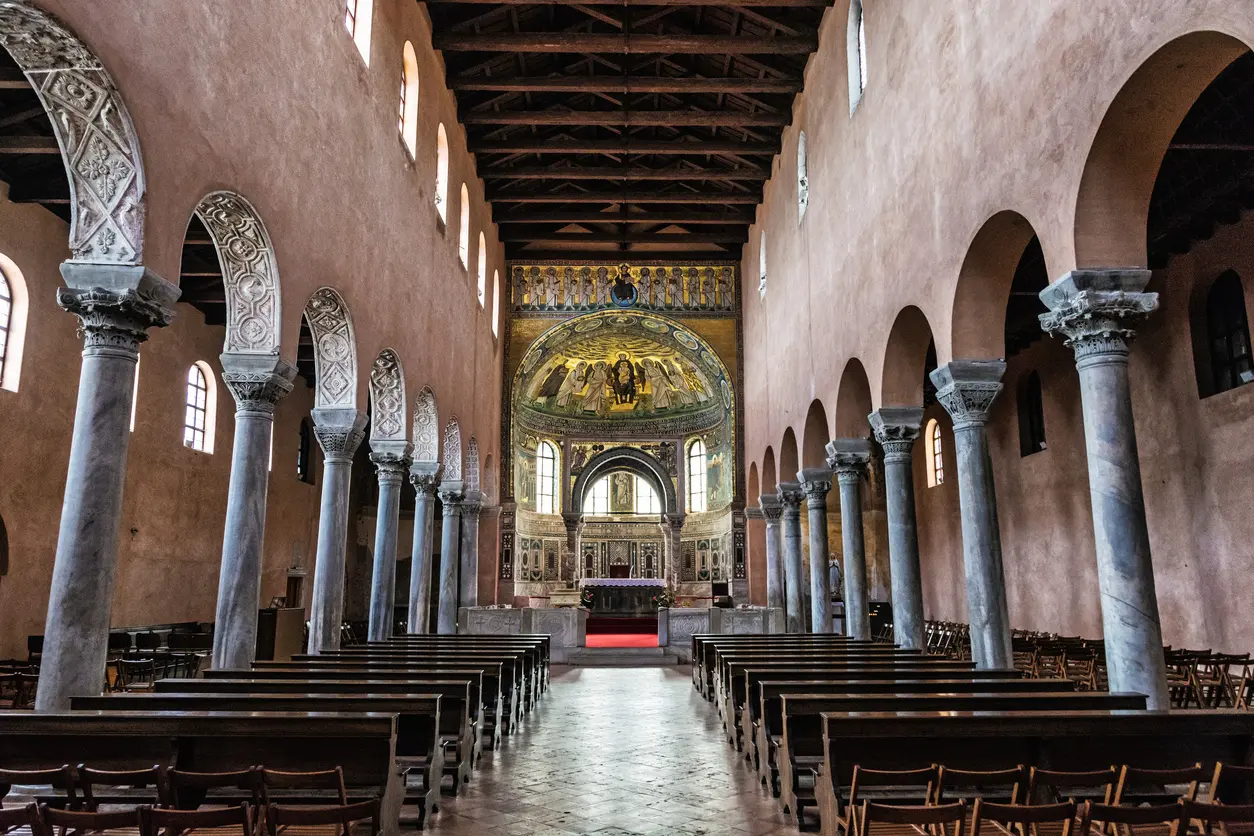
Episcopal Complex of the Euphrasian Basilica in the Historic Centre of Poreč
Christianity was established as far back as the 4th century in Poreč and the basilica, atrium, baptistery and episcopal palace make up a site of exceptional interest to religious architectural historians. The basilica features a combination of Byzantine and classical elements. Poreč was UNESCO listed in 1997.
How to visit Poreč: It takes just 45 minutes to reach Porec from Rovinj, our favorite seaside town of this peninsular part of north Croatia. Spending a couple of hours in Poreč makes for a great day out exploring Istria’s other highlights like Motovun (on the Tentative list for UNESCO-protected status) and Groznjan in the heart of Istria’s truffle country.
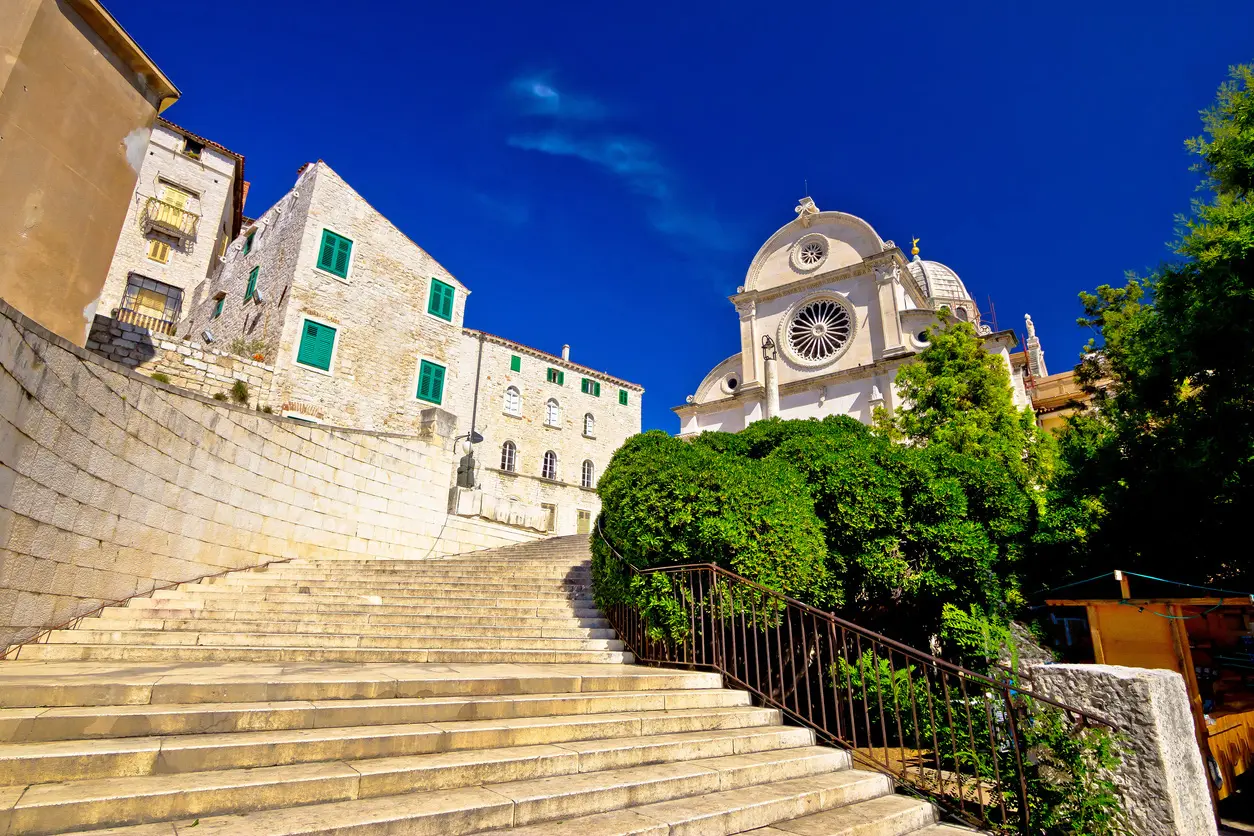
The Cathedral of St James in Šibenik
Croatia marked the new millenium with the acquisition of UNESCO World Heritage Status for the cathedral in Sibenik on the Dalmatian Coast north of Split. This impressive 15th & 16th century structure is built entirely from stone and its three architects employed some innovative techniques for its construction. Decorated with a fusion of Gothic and Renaissance art, it marks the transition in styles in church architecture.
How to visit Sibenik: although we don’t offer Sibenik as an overnight destination it’s just an hour’s drive from Zadar, another Tentative List candidate, or can be seen on a day trip that also goes to Krka National Park from Split or Trogir. If you’re traveling from Split or Trogir to Zadar we usually suggest a stop in Sibenik. Even if centuries-old churches aren’t your thing, a $100 lunch at Michelin-starred Pelegrini right opposite might just be.
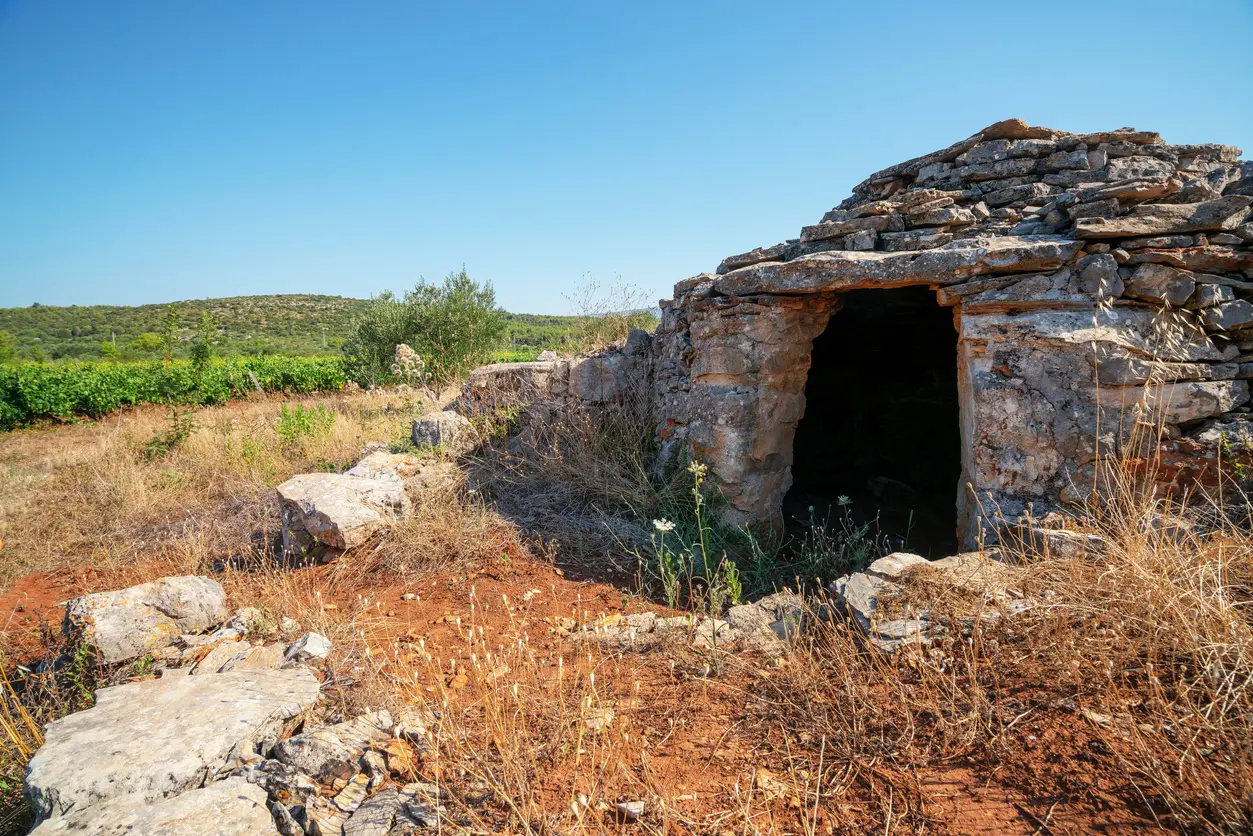
Stari Grad Plain, Hvar
Hvar might be popular with the yacht week set now but back in the 4th century BC it was home to a colony of Ionian Greeks from the island of Paros. Visitors to this area outside Stari Grad (literally Old Town) on the northern side of the island can admire the way that the original agricultural activity of the fertile plain continues to this day, with grapes and olives still the primary crops. There are clear traces of dwellings and stone walls that depict how the land was divided. It is for this reason that UNESCO listed Stari Grad Plain in 2008.
How to visit Stari Grad Plain: our main overnight destination on Hvar is Hvar Town itself, on the south-western tip of the island. It’s an easy half day trip from there to Stari Grad, less than 30 minutes drive.
These limestone carved tombstones can be found in several countries in the Balkans. Each features decorative motifs and inscriptions. This multi-country UNESCO listing was created in 2016.
How to visit the tombstones: Croatia’s two sites featuring them are at Dubravka in the Konavle area about an hour from Dubrovnik, very close to the border with Montenegro and at Velika and Mala Crljivica, a short detour off the highway between Dubrovnik and Split.
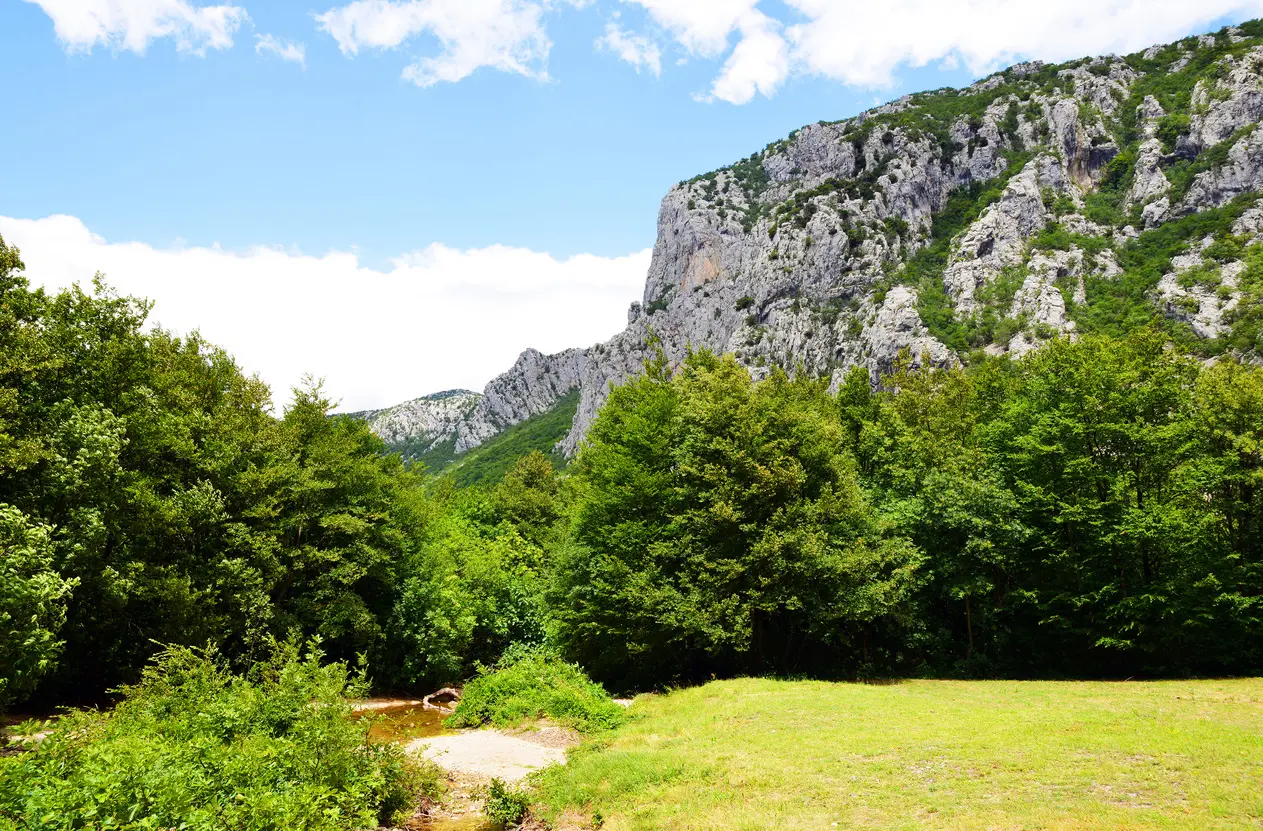
Paklenica National Park
Part of the “Ancient and Primeval Beech Forests of the Carpathians and Other Regions of Europe”, Paklenica’s beech forests were added to this existing multi-country 2007 listing in 2017. This karst river canyon National Park offers excellent hiking and climbing opportunities as well as a cave complex you can visit. An abandoned village is home to a small ethnographic museum.
How to visit: Paklenica is located about 30 miles from Zadar, a destination we feel should get many more visitors.
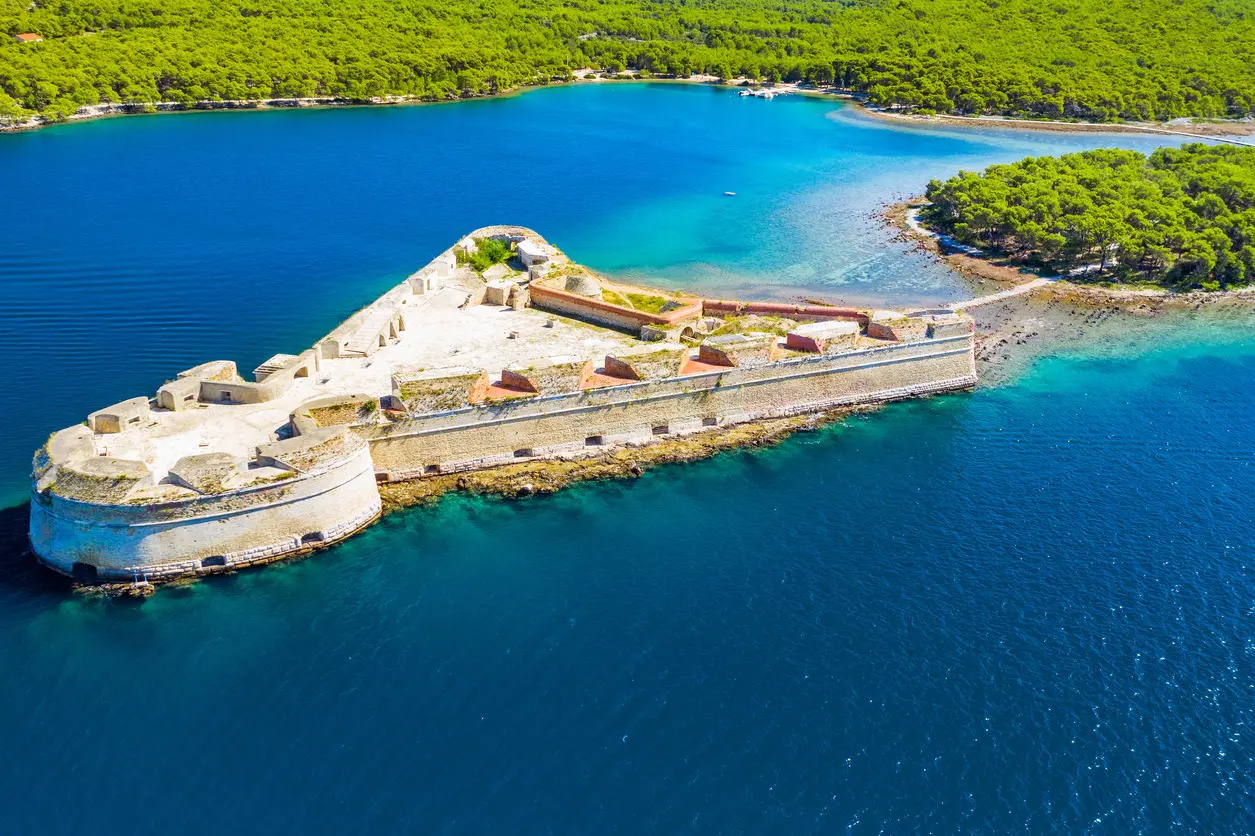
Zadar and Fort of St Nikola, Sibenik
Another multi-country entry, from 2017, part of the “Venetian Works of Defence between the 16th and 17th Centuries”. This listing emphasises the reach of the Republic of Venice in its heyday as a maritime power. Croatia’s sites are the defensive walls of Zadar, and the fortress at the entrance to Sibenik bay, shown above. Other sites can be found in Italy, and at Kotor in Montenegro.
The Tentative List
UNESCO’s Tentative List is comprised of locations or areas that a country’s UNESCO committee would like to be considered for nomination. Addition to this list can mean that the country considers the preservation or restoration of the site a priority. Some UNESCO listings can be motivated by a desire to generate more tourism interest in a region that while worthy in and of itself, needs a UNESCO listing to gain visibility. Croatia submitted a number of sites in 2005 and 2007. Here’s a quick run-down of each batch:
Croatia’s 2005 Tentative List Submissions
2005 Saw a mix of ancient and medieval to renaissance historical sites and some natural sites.
Zadar Episcopal Complex
With elements stretching back to an ancient Roman forum, it’s a mystery to us quite why Zadar has been overlooked and it’s certainly worth looking around these various sites in Zadar’s old town.
Mali Ston and its salt pans
A popular day trip for its legendary oysters, the impressive and lengthy defensive walls and the salt pans, still worked to this day, Mail Ston should be a shoo-in.
Old town and fort of Osijek
An Austro-Hungarian empire era old town, influenced by French fortification builders. It was constructed while the town was still under the threat of attack from the Turks who the Austrian army had forced into retreat after 160 years of occupation. Most of Croatia’s UNESCO sites are on or near the coast. The addition of Osijek to the UNESCO list would be a huge boost for the Slavonia region.

Varazdin Historic Nucleus and Old Town (Castle)
An hour or so north of Zagreb, much of the shape of Varazdin’s historical core is thanks to its time as the capital of the kingdom of Croatia, with noblemen building grand houses to be close the seat of power. Varazdin is another inland location that could benefit from more visitors. Until then you can enjoy it relatively unencumbered by crowds.
Castle of Veliki Tabor
The castle dates from the 15th and 16th century and retains much of its appearance from that time. It houses a museum with several exhibitions and plays host to an annual international short film festival. Veliki Tabor is best visited as a day trip from Zagreb, about 75 minutes drive away. It’s located deep in the countryside close to the Slovenian border.
Lonjsko Polje Nature Park
This nature reserve on the border with Bosnia is a wetland situated by the Sava River, a tributary of the Danube. Prone to flooding, it provides a habitat for many endangered species as well as grazing pasture for cattle. Lonjsko is about an hour and a half drive from Zagreb.
Velebit Mountain
Velebit is Croatia’s largest mountain and it’s tallest peak is in the Paklenica National Park. UNESCO World Heritage status has been applied for to both recognise the historical importance of the way of life that developed along the mountain pass road and to ward off further encroachment of construction.
Frontiers of the Roman Empire Croatian Limes
Limes in this context means ‘border’ and that’s what the Danube river represented to the Roman Empire: the border between the Empire and the barbaric lands. There’s not a lot to see of any of the old Roman roads, forts or watchtowers that marked the bounds of civilisation.
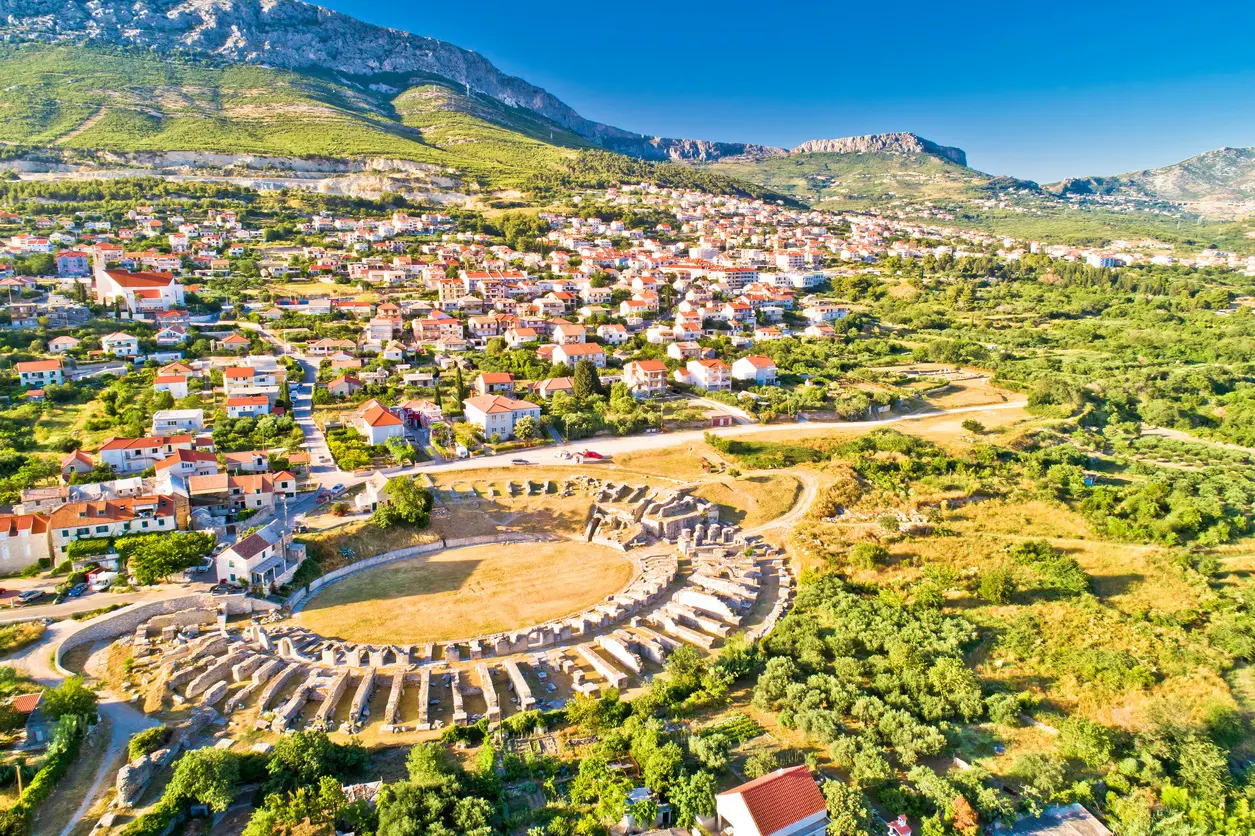
Extension to the Diocletian’s Palace and the Historical Nucleus of Split
Croatia’s ministry of culture have applied to list Diocletian’s aqueduct and the Roman ruins of Salona at Solin, shown above, with the existing listing for Split.

Lubenice
Lubenice is a fortified settlement that dates back to the bronze age located on the relatively hard-to-reach island of Cres. It’s about three hours by car and ferry from Rovinj. Lubenice’s collection of 40 stone buildings with 24 permanent inhabitants overlooks the Adriatic sea from a vantage point on a cliff 380m above the waves. Roman, medieval and baroque elements are evident here.
Croatia’s 2007 Tentative List Submissions
Croatia’s most recent batch of submissions was made in 2007.

Primošten Vineyards
Croatia is covered with wine-growing areas, but only one has been submitted to the UNESCO list. The Primošten Vineyards are unique in that they are on rocky land which had to be cleared by hand and are cultivated in small lots divided by drystone walls, in the same way they would have been as far back as the 8th century BC. The grapes grown here are of the Babic variety, which produces its best quality wines precisely in this region. Primosten is a small seaside town on the Dalmatian coast a little south of Sibenik and between Split and Zadar. The oenocurious might choose to make a brief stop here when driving between Zadar and Split.
Hermitage Blaca
On the island of Brac you’ll find the 16th century hermitic monastery Blaca. The monastery has an onsite museum and one of the highlights of a visit there is the monastic library with a collection of over 11,000 books, most from before 1800. Our closest overnight destination to the monastery is Bol, also on Brac island, under an hour’s drive away.
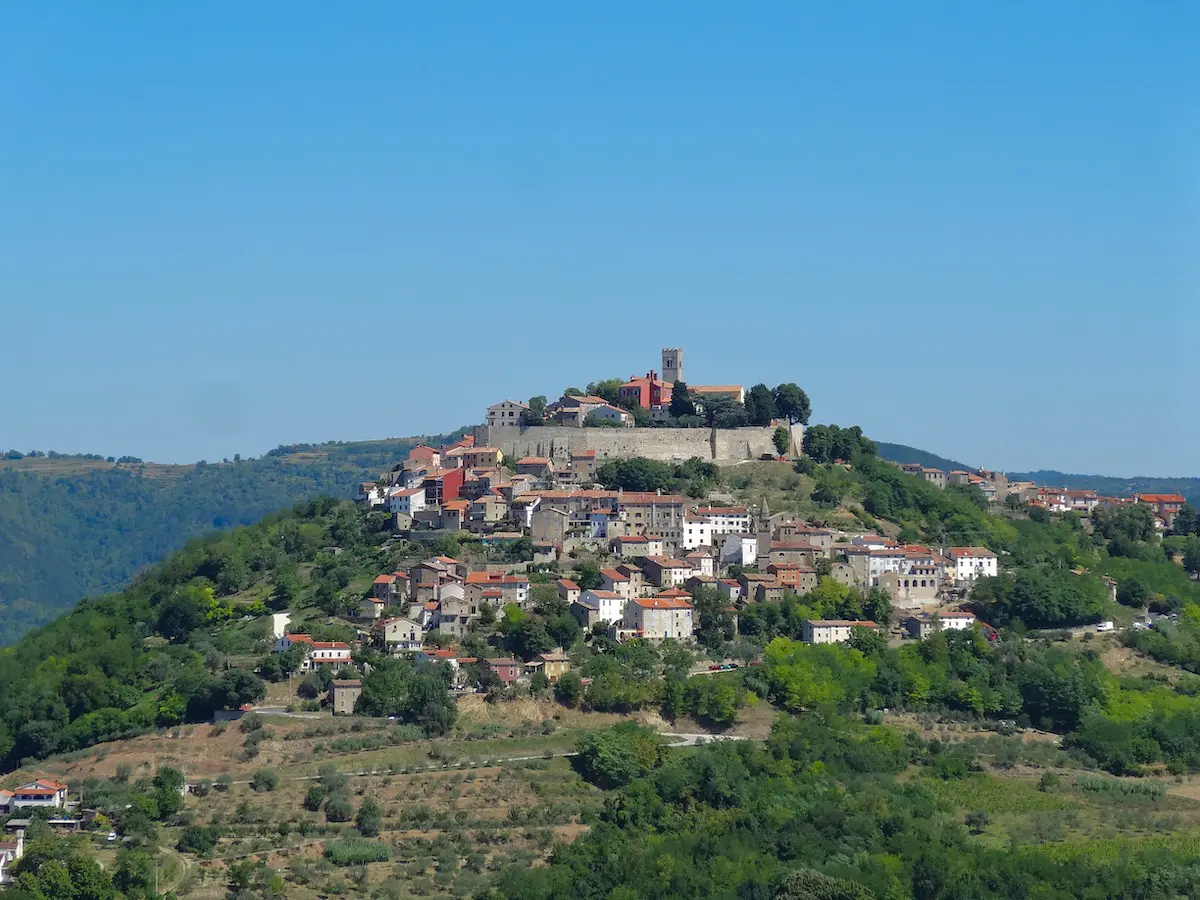
City of Motovun
If Istria is Croatia’s Tuscany then one of the clearest signposts is Motovun. Although it dates back to prehistory as the location of a fort, with it strategi position dominating the Mirna River valley, what you see today owes mostly to its five centuries of Venetian rule. You’ll notice the lion of St Mark still watches over the main gate to the hilltop city walls. Although a tiny town, we do offer one hotel there, so you could stay overnight but most visitors choose to day trip from Rovinj, under an hour’s drive away.
The historic town of Korčula
It’s almost surprising that Korcula isn’t already a full UNESCO world heritage site. Dubrovnik’s little sister, as it’s known, is reputed to be Marco Polo’s hometown. Built as a Venetian colony, with a fishbone street pattern that exists to this day, Korcula’s one of the overnight destinations our guests love most.
Kornati National Park and Telašćica Nature Park
Kornati is a popular boat trip from Zadar. A national park since 1980, the Kornati archipelago consists of 89 mostly tiny islands, islets and rocks. The Telašćica Nature Park encompasses the far southeastern part of the island of Dugi Otok. The islands are formed of karst and have the characteristic caves, pits, cracks and sinkholes common to the Croatian karst area. A day trip there focuses on enjoying the natural beauty while bathing in the sea and lunching under the shade of centuries old olive trees in a small fishing settlement.
On the UNESCO hunt?
While UNESCO listing isn’t a guarantee of an interesting place to visit, there’s a certain satisfaction ‘catching them all’ and we can put together a custom Croatia itinerary that lets you fill your UNESCO dance card.

Charlie is head of marketing at JayWay Travel. A long-term Prague resident, his interests are cooking, eating out, cycling, skiing and of course, travel.
This is such a great guide on Croatia! Would love to visit Split and various vineyards of Croatia. The rooftops look so pretty!